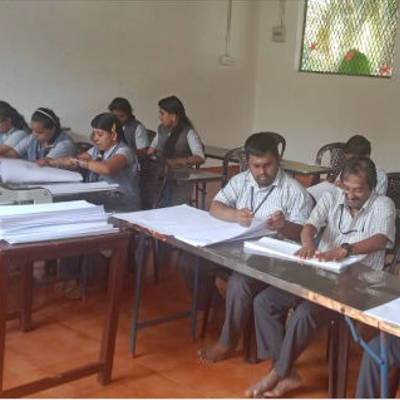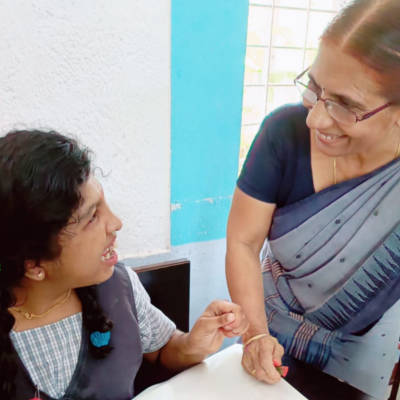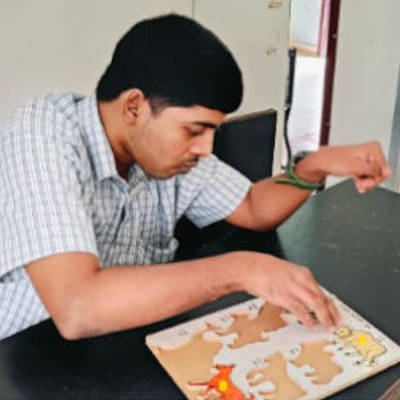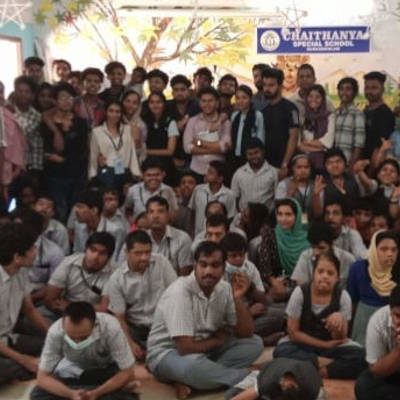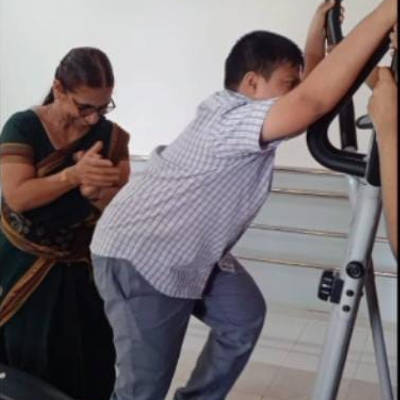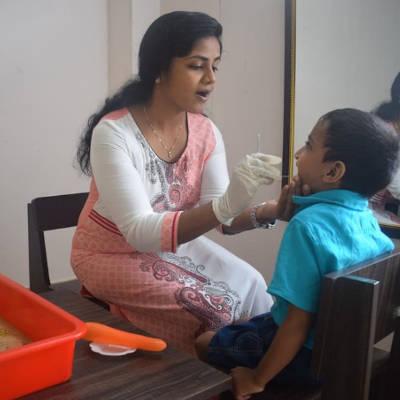Loading...
Pedagogy
Pedagogy
Children with learning disabilities show greater learning when techniques like task analysis, peer teaching, cooperative learning, learning corners and multisensory approach are used. The following strategies are used by our teachers when trying to teach special children.
- Strategies for reading skills
- Presenting new concepts and vocabulary
- Guiding students to read stories and ask questions to bring up the purpose or goal of the reading
- Developing or strengthening skills relating to the material through drills or worksheet activities
- Reading aloud to students regularly
- Devoting a few minutes every day to sustained silent reading
- Use writing activities that provide opportunities for the teacher to model writing strategies and skills.
- Providing meaningful printed materials
- Let the child read aloud (oral reading)
- Reading in a groups
- Strategies for writing skills
- Writing skills training four times per week
- Creating a social climate conducive to writing development.
- Integrating writing with subjects such as language and arts so as to stimulate the writing skills.
- student’s form letters in wet fingerprint/paint/sand.
- Using colored directional cues such as green arrows and red dots.
- Helping students to form an association for a letter they have difficulty remembering
- Auditory reinforcement through practice.
- Strategies for mathematics
- Using visuals - supplement teaching by drawing and constructing visual representations.
- Providing verbal reinforcement with visual material.
- Using tactile presentations.
- Using color cues.
- Providing sample problems for students with memory difficulties.
- Use display charts.
- Play tallying games.
- Reinforcing high rates of correct responses.
- Setting a rate goal.
- Teaching students the relationship between addition and subtraction.
- Using color-coded textbooks (e.g. green equals start, red equals stop)
- Teaching key vocabulary in mathematics.
- Strategies for Attention deficit and hyperactive disorder
- Rewarding student for being prepared by allowing him/her to participate in favorite activities
- Establishing routines for placing objects.
- Providing the student with a list of materials needed for each task
- Enhancing clarity of instructions.
- Repeating as often in a clear, clam tone.
- Making tasks more interesting.
- Increasing the novelty of the task by using a game format
- Using high interest curriculum materials.
- General interventions
- Show, demonstrate and model.
- Utilizing multisensory learning.
- Breaking information down into smaller units.
- Utilizing peer tutoring and cooperative learning.
- Making information as concrete as possible.
- Reading test materials to the student.
- Giving students a chance to share and justify their thinking in different ways.
- Laying greater emphasis on inter student dialogue and collaboration.

